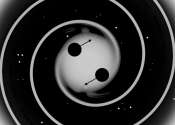JWST unveils the structure of dust near a supermassive black hole
A team of international scientists led by researchers at Newcastle University, have used the James Webb Space Telescope (JWST) to reveal a hidden veil of dust in a galaxy 70 million light years away.









